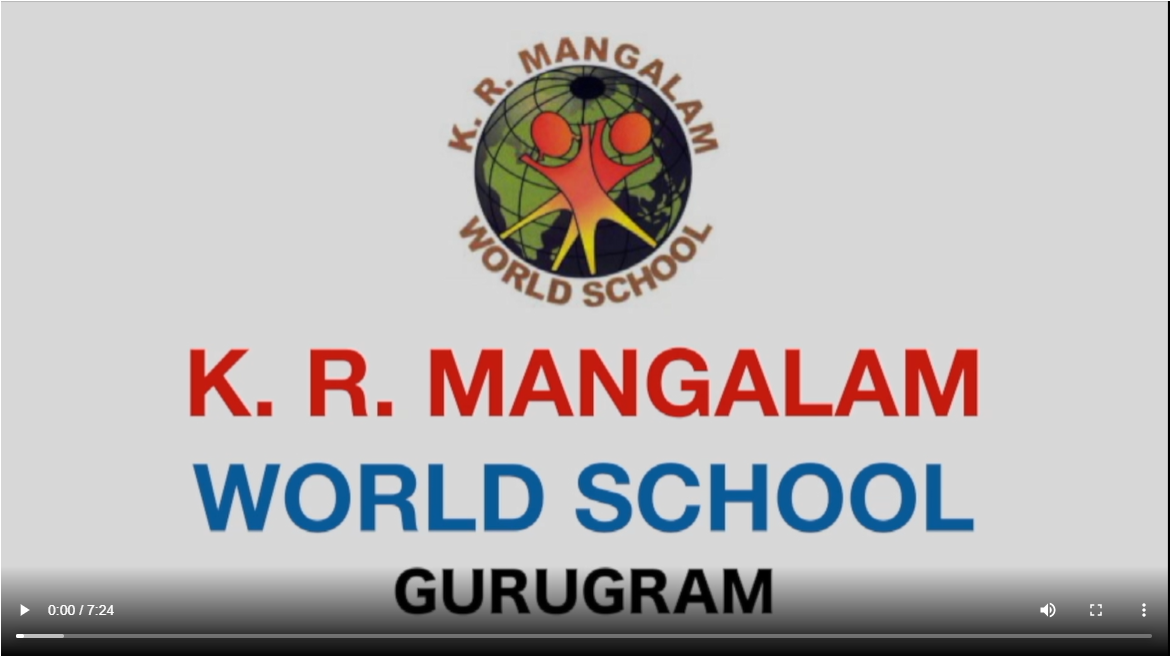Nurturing Learning Programmes
K.R. Mangalam World School makes a point of educating its learners beyond the regular curriculum. Our co-curricular activities edify them with learning in discipline, fitness, team spirit and confidence and help them develop a well-rounded personality.
EXPERIENTIAL LEARNING
Experiential learning, also known as ‘Learning by Doing’, is an approach that engages students in the process of learning. Following this approach at KRM, the facilitator ensures students get fair opportunities to acquire comprehensive knowledge and evolve themselves intellectually, creatively, emotionally, socially, and physically. When students experiences learning, they apply their theoretical skills practically that enriches critical thinking and enhances logical conceptualization and self-confidence.
K. R. Mangalam offers Experiential learning through a plethora of activities like Active Experimentation, Marketing Management, Atal Tinkering Lab(ATL), Hydroponics etc.
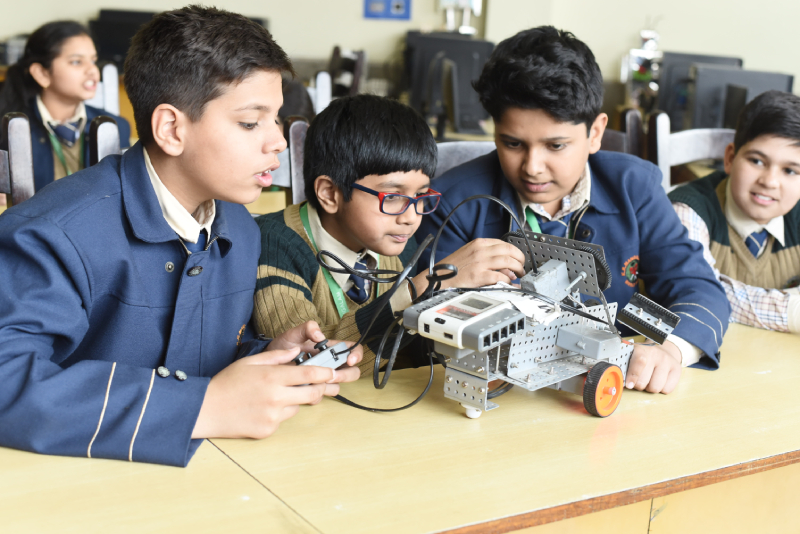
K.R. Mangalam offers Experiential learning through a plethora of activities:
- 1Float & Sink – To reiterate the pre-number concept of heavy and light, kindergarten students were engaged in the Sink and Float activity. It encouraged them to make observations and understand that light objects float and heavy objects sink.
- 2Active Experimentation – In Primary School, our curriculum focuses on active experimentation through activities like Role Play, Talk Show, Scavenger Hunt, Fun with Factors, Globe Making, Egg Hatching, Germination, Photosynthesis, etc. at school.
Some of these activities are:
- 1Sun Dial Activity – A sunny-day activity was organized for the students of Grade V, where they put together their hands and minds to create a Sundial for investigating the movements of the sun throughout the day.
- 2Egg Hatching Activity– Students of Grade IV witnessed the beautiful process of egg hatching. This activity not only increased their scientific knowledge but also sparked their curiosity and patience at the same time.
- 3Phases of Moon – Students of Grade V tried to study the Solar and Lunar eclipses using a ball and a source of light.
- Atal Tinkering Lab (ATL) – Our school is proud to have a well-equipped ATL where students complete their projects by following the steps demonstrated by mentors.
For example, the electrical circuit is no longer explained through diagrams, students now have access to the material pre-requisite to learn how an electric circuit works practically. Now, they learn by using the correct wires, placing the batteries in the right way, and ensuring that the bulb lights up.
Learning is not just confined to books, the new-age pedagogy modules allow learners think logically, solve real-world problems, and eventually reach the desired outcome.
A simple diagram can never make this happen, as rightly said, ‘Learning is experience. Everything else is just information.’ - Track the evaporation of various liquids – The students of grade X conducted experiments to compare the rate of evaporation of various solvents at room temperature. They tabulated the observation data for 5 days and discussed the results together to achieve combined learning outcomes.
- Water conservation techniques at Home – The students of grade IX performed an experiential learning activity to devise ways of preventing water wastage. Through this activity, they saved water and conserved it for domestic use to achieve the target of saving at least 5 litre water every day. It helped them understand the concept of water conservation and while sensitizing them towards the environment.
- Marketing Management – The students of class XII, were given an experiential learning activity as their business studies project, wherein they had to create a product marketing plan and list out how they would carry out all the 4 Ps of marketing. It inculcated a sense of entrepreneurship amongst the students, allowing them to grow in all fields of commerce.
- Hydroponics – The students of Grade XI were involved in experiential learning by growing leafy vegetables in the comfort of their homes without using soil. This activity not only helped them understand zero-maintenance kitchen gardens but also achieve organic produce.
- Understanding natural antibiotics-The students of Grade XII conducted an activity on the effect of natural antibiotics like turmeric, garlic on bacteria as compared to chemical antibiotics. They also prepared a report on understanding home remedies.
MULTIPLE INTELLIGENCES
The Multiple Intelligences approach to learning provides students with a better understanding of what they learn. We reinforce skills ranging from linguistic, numeracy, art, music, nature, spatial, and kinesthetic in students, enabling them to utilize their specific abilities. Such skills are attained through co-curricular activities but are integral to amplify the teaching curriculum in multiple ways. Infinite combinations of curricular and co-curricular skills work together to simplify one’s understanding of a concept.
For example, a child may better comprehend a concept through a visual approach while the other one may absorb the same concept through music. The Multiple Intelligences approach empowers students to explore different horizons of learning methodologies to broaden their capabilities.
When a new concept such as a number or a letter is introduced to early learners, the multiple intelligences are being nurtured through the following activities:
- (i)Linguistic Intelligence- vocabulary game, letter hunt, story narration
- (ii)Spatial Intelligence- clay molding, play pictionary, and art activities
- (iii)Logical Intelligence- puzzles and patterns
- (iv)Musical Intelligence- phonic song and rhymes
- (v)Kinesthetic Intelligence- Hopscotch
- (vi)Interpersonal Intelligence- Show N Tell
Grammar is fun
Language is the expression of ideas and words, allowing students to sort out different impressions given by the senses. Students of Grade V were exposed to various fun-based activities to widen their learning extents. They studied different parts of speech using certain examples through the ‘hopscotch’ activity. ‘Once upon a pronoun’ was another grammar learning activity to make students differentiate between pronouns by listening to their favorite stories. An activity-based grammar learning approach is an effective way to get students’ grammar on point.
Comic Strip Making
The students designed comic strips to depict the acts of cybercrimes. The comic strips included the conversation with Cyber Gurus suggesting solutions in a fun way. This activity aimed to enhance the concepts of cyber security amongst students and discover their artistic edge.
Pottery and Paintings of Telangana
The students were asked to find the history of Pottery as a craft that flourished in Telangana. Students came across the fact that the domination of plastic has faded the glory of the pottery profession. Telangana is a land blessed with scenic beauty and rich heritage of arts and crafts. Each region of the state has a unique story to tell and our students narrated those tales by creating artifacts using the Quilling and Paper Mache’s technique.
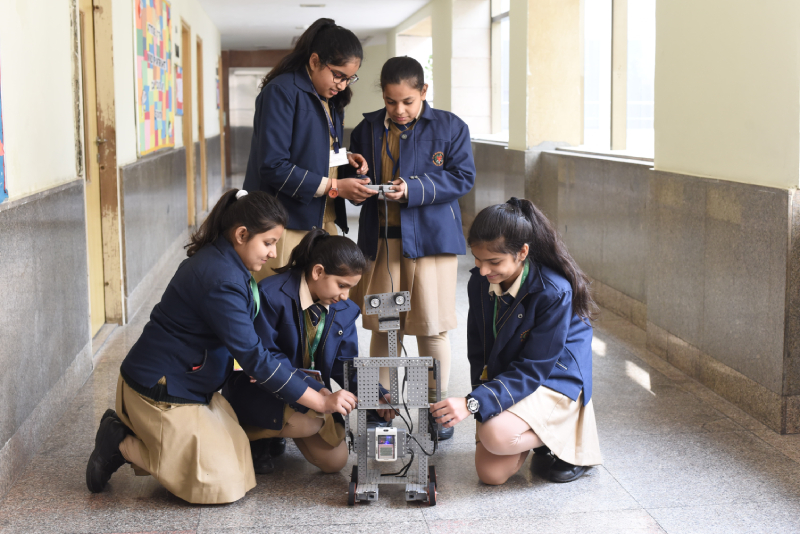
‘Tree In Season’ – English activity
Students of Grade VIII read a poem – ‘The Tree In Season’ that talks about multiple stages of a tree in different seasons and compares them to the ups and downs of human life. Students prepared a write-up and an illustration to explain and present these stages to the class. The presentation emphasized the fact that ups and downs are parts of life and the sadness ends with the arrival of happiness just like harsh winters are always followed by spring.
Sketching From Nature And Surroundings Of Telangana
The Political Science students created mesmerizing sketchings of nature and the surroundings of Telangana. They tried to illustrate the water scarcity issues in the state through these compelling sketches. Alongside, students also captured some eye-catching tourists attractions that make this place hard to leave. These sites include majestic Bhongir Fort at Nalgonda nestling at the top of a monolithic hill at the height of over 700-feet. The Bhongir or Bhuvangiri fort is named for a petroglyph at the hill temple depicting the universe. Pakhal Lake and various other captivating tourist spots in Karimnagar were painted by our students.
PROJECT BASED LEARNING
To ingrain and develop deep content knowledge as well as critical thinking, collaboration, creativity, and communication skills, the school provides Project-Based Learning to the students. This is a learning methodology through which students acquire knowledge and skills by working on a concept, idea, or problem for an extended period. A ‘Project’ is a process that keeps learners indulged in research, solving problems, innovations, creations, and presentations.
Throughout an academic session, we engage our students in several projects based on myriad subjects ranging from science, technology, economics, environment, social concerns, and politics, etc.
Few of them are:
- 1Project: Seaspiracy
- 2Student Exchange Program
- 3Multi-Cultural Fair
- 4Annual Presentations
- 5Transdisciplinary- Vision and Values of the World in Future
- 6Project Smartkrishi
(a) Tinkerpreneur by Grade VIII-XII
KRM students participated in a 9-week long summer boot camp that equipped them with digital skills and frameworks to create their online ventures. They worked under the mentorship of industry leaders and academicians who gave them field-based insights to enhance their entrepreneurial capabilities.
Product: Seaspiracy
About the product: An informational website named – ‘Seaspiracy’ was created where people can discover oceans, marine life, unknown facts about aquatic lives, and mysteries hidden in the depth of the waters. The brand name was a conjunction of words – Sea and Conspiracy that meant revealing the conspiracies of seas. The website had a relevant logo and the tagline ‘discover our oceans’. Along with delivering factual information related to seas and oceans, the project also highlighted the extent of human interference in exploiting natural resources and their components.
The project undertaken by students of Grade XI was conducted using the below stages:
(b) Project SmartKrishi
Under CBSE-IBM AI-Enabled Seva Project, students of class XII submitted ideas and got an opportunity to develop a fully functional prototype. Under the project SMARTKRISHI, an app ‘Kisaan Anumaan’ was developed. This app was designed to provide an instant tool to the farmers, giving them insight into the crop that they should sow in a particular season to get the maximum returns every year. The development of the project followed the AI Project cycle. The project was selected for mentoring by IBM experts and the student also bagged a virtual internship of 15 days in IBM.
(c) Multi-Cultural Fair by Grade VII
In order to raise Global Citizens and to acquaint students with the different cultures across the globe, students were assigned a project of putting up a Multi-Cultural Fair which spanned over 30 days. The complete lifecycle of the project covered various aspects of different countries like language, food, clothing, architecture, music, dance forms, and festivals. The following steps of the planning-execution roadmap were followed by the students:
Different groups of students worked on costumes, music, and PowerPoint presentations. After a month-long preparation, they exhibited the culture of different countries by transforming classrooms into mini countries like Italy, China, etc.
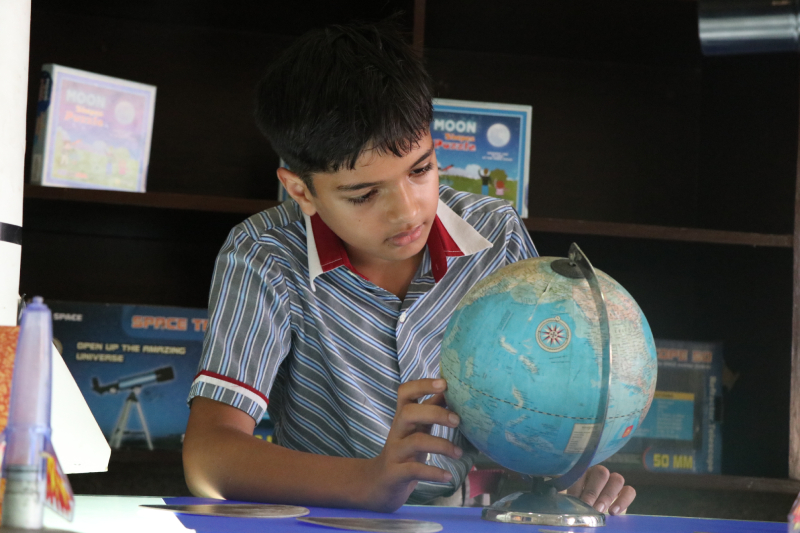
(d) Australian Exchange Programme by Grade III
A one-month project on Australian Exchange Programme was undertaken for Grade III through which students of K.R. Mangalam World School, Gurgaon, and Red Hill Primary School, Australia, got an opportunity to learn about culture, language, food, festivals of the other country. They also experienced what school life looks like in another part of the world. This project was an insightful experience for the students and added value to their international and cultural awareness.
(e) ‘Vision and values of the world in Future’ by Grade V
“Every project has challenges and every project has rewards.” Students of Grade 5 were given an interdisciplinary project ‘Vision and values of the world in Future’. As a part of the project:
-Students researched and gathered information on carbon footprinting
-Expressed conversation among the planets in future using their imagination
-Researched and explained comparison between metro and town life
They concluded that advancement and consistent growth is the need of time for each country without ruining their cultures.
(f) Unity in Diversity by Grade II and IV
A project to depict India’s rich cultural heritage and communal harmony was completed by the students of Grades 2 and 4 in the form of an annual presentation. The students researched cultures, languages, customs, costumes, music, and dance forms, etc. of different Indian states. They showcased India’s cultural diversity through tableaux, demonstrating their keen sense of creativity and presentation skills.
(g) Project on animals by Grade I
A week-long project on animals was assigned to Grade 1 students, wherein they researched habitats, eating habits, appearances, classifications, and other major facts related to different animals. The students projected their learning through pictures and brief write-ups.
PERSONAL SOCIAL AND PHYSICAL EDUCATION (PSPE)
Our school is committed to promoting the personal, social, and physical well-being of students. PSPE is achieved through the holistic development of concepts, knowledge, and attitudes that contribute to overall well-being. The activities that surround PSPE at KRM cover aspects of students’ experiences at school and beyond. Consequently, it leads to self-exploration, strengthens interpersonal relationships, and promotes an active and healthy lifestyle. The teachers and parents support the school’s philosophy to help nurture the learners with character and competence.
PSPE @ KRM
(a) Contributing to the society
The students are actively involved to work on various social experiments to develop a relationship with the society and the world around them. The surveys and awareness drive conducted by the students broaden their thought processes and make them responsible custodians of future generations.
(b) Group counseling sessions
The school counselor conducts weekly evening sessions in small groups to provide the necessary space for the students to share their thoughts. It is an unbiased space where students can express their emotions and feelings without any hesitations. Meditation and mindfulness sessions are conducted to provide a positive outlook to the students. These practices foster resilience and build self-control in young learners.
(c) Physical Fitness
Physical Education at our school is far more than just participating in sports and games. Its purpose is to develop a set of skills and attitudes together. Regular exposure to all kinds of physical learning experiences like yoga, table tennis, lawn tennis, basketball, skating, chess, and life skills enables students to make informed choices throughout their lives.
Considering that students learn best when they are actively engaged, we provide them with ample opportunities to enhance their physical and social skills through structured play (throwing and catching), playing Simon says (following instructions), board games (turn-taking skills), and many more. Students also participate in physical activities like hopping, jumping, sliding, running, kicking, and skipping.
(d) Sharing is caring
The students learn to nurture relationships with others by sharing ideas during various class activities, celebrating success, and offering and seeking support from their teachers and peer group. It is an integral part of teaching and learning. The development of overall well-being is defined through three common strands – identity, active learning, and interactions. Therefore, every facilitator at KRM has the responsibility to support students in their personal, social, and physical development through all learning engagements.
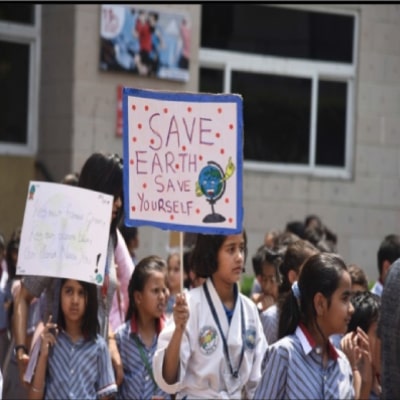
(e) Happiness Curriculum
The happiness curriculum aims to develop self-awareness and mindfulness in learners. In addition, it inculcates communication skills, critical thinking, and analytical skills, helping them communicate effectively and resolve real problems by applying life skills. As a part of the happiness curriculum class, students undergo meditation, value education, and mental exercises.
(f) Awareness Sessions by Peers
Peer education is an effective way to put a message across young learners. Students of Grade VIII conducted a session on the topic ‘Dignity of Labour’ to sensitize their fellow students. The topic was chosen on the occasion of Labour Day to emphasize the importance of labor/helpers in our society.
Students presented examples of numerous helpers and how our lives would come to a standstill without their assistance. The session demonstrated the poor living conditions of such helpers and the way they are treated by others. Students were acquainted with the role of helpers and the respect they deserve for the work they do. This session not only contributed to developing a sense of responsibility towards helpers but also contributed towards the social and emotional growth of students as individuals who value humanity as an essential virtue of life.
STEAM
As Andrew Miller, an educator said, “Your students can learn the arts as well as learn through the arts.”
STEAM is a curriculum based on the idea of educating students in five specific disciplines – Science, Technology, Engineering, Arts, and Mathematics. It is an interdisciplinary and applied approach, integrating all disciplines into a cohesive learning paradigm based on real-world applications.
STEAM education at KRM produces creators, thinkers, problem solvers, doers, innovators, and inventors. It is an interactive teaching technique that amplifies the engagement level among students through the labs like Robotics, Mathematics, Science, and Arts, facilitating them to better learn the mechanism and grasp the concept. STEAM teaches to be innovative in the digital age and prepares students to represent themselves confidently on global fronts.
Few activities related to STEAM are:
- 1Artificial Intelligence and Creativity
- 2Science Exhibition
- 3Logical- Mathematical Intelligences
- 4Heritage and Paintings of Telangana
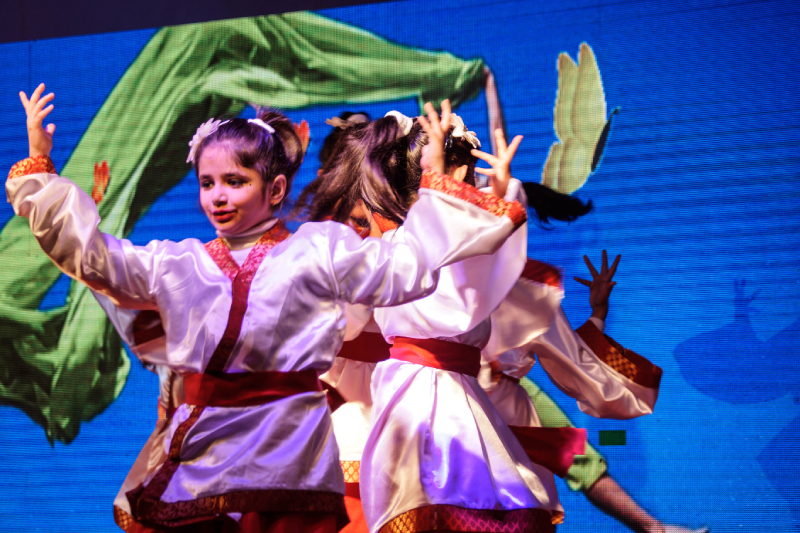
Few activities related to this teaching module are mentioned below:
- Artificial Intelligence and Creativity
Technology is changing rapidly and to keep our young learners updated with the new inventions and innovations, a role-play was conducted by the students of Grade IV. They enacted like a smart machine using different props to understand the new generation of computers. Students presented interesting facts about new technology as an exercise to enhance their communication skills. - Rainbow Jar
We at KRM love to teach science in a fun way and this easy rainbow jar activity is one of our all-time favorites. With some common household ingredients such as dish soap and honey, little scientists can pour a rainbow into a jar. This exciting and 100% kid-friendly science experiment is no less than magic for them to learn, acquire, and get amazed. - Science behind the paintings of Telangana
Grade X made a PowerPoint presentation stating the science behind Telangana art. Telangana paintings essentially consist of scrolls that depict stories from the epics, Puranas, and folktales, and were once an integral part of the religious, social, and cultural lives of the villages in Telangana.
Students researched the science behind the natural colors used in the paintings. These include the white color, derived from powdered seashell or zinc oxide (ZnO); carbon black from lamp soot (formed due to incomplete combustion); yellow and red from powdered local stones (Gaddalu ranga), blue from indigo, while the skin color came from turmeric paste. Coconut shells were also used as containers for mixing colors, while squirrel’s or goat’s hair was used for making painting brushes following the traditional processes.
Students also stated the effect of the colors used in Telanagana art was the mood elevation. This research-based project involved the essence of art while amplifying students’ research and communication skills.
- Telangana Heritage on Graph
The activity was conducted with students of Class X as an Art Integration project. Students traced the different postures of dance forms of Telangana on graph paper. They then chose few points on the boundaries of graph paper and penned down their coordinates. - Science Exhibition (Working Models)
Students work on different areas of science and research on a particular concept which is presented in the form of a working model by the student.
For example: ‘Theatre in a Box’ – The students created a mini theatre in a box by using a mobile phone to play videos and a magnifying glass to enlarge the view. They also ensured to exhibit erect images by calculating the ideal distance between the video playing device and the display screen. - STEAM activities encourage and challenge a student’s natural sense of curiosity
Logical-mathematical intelligence is commonly thought of as ‘scientific thinking,’ or the ability to reason, work with abstract symbols, recognize patterns, and see connections between separate pieces of information. Making it a fun activity, students were encouraged to create DIY study material. To learn the concept of place value, each student made his/her abacus with material available at home. They also made patterns to get a better understanding of logical reasoning.

